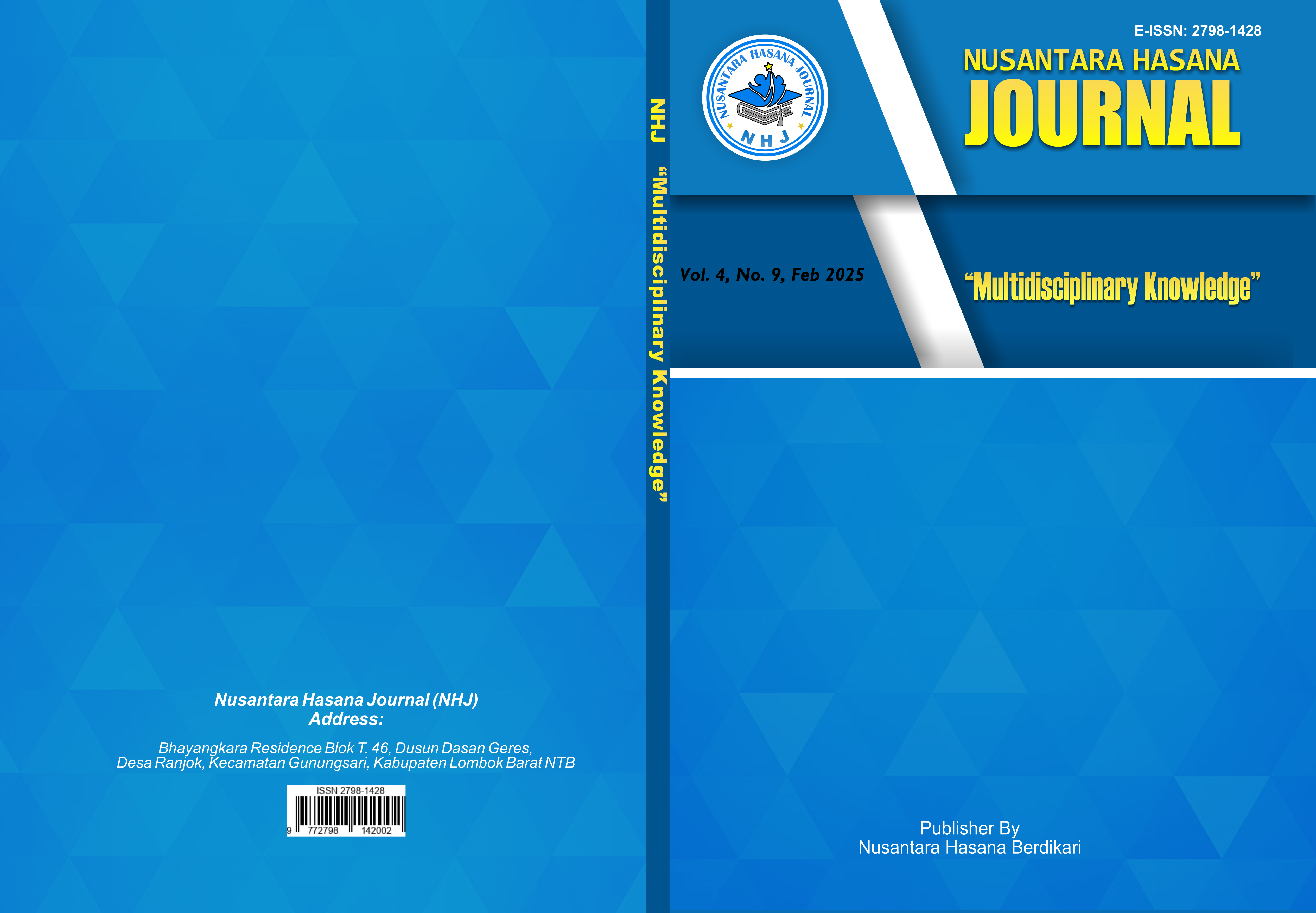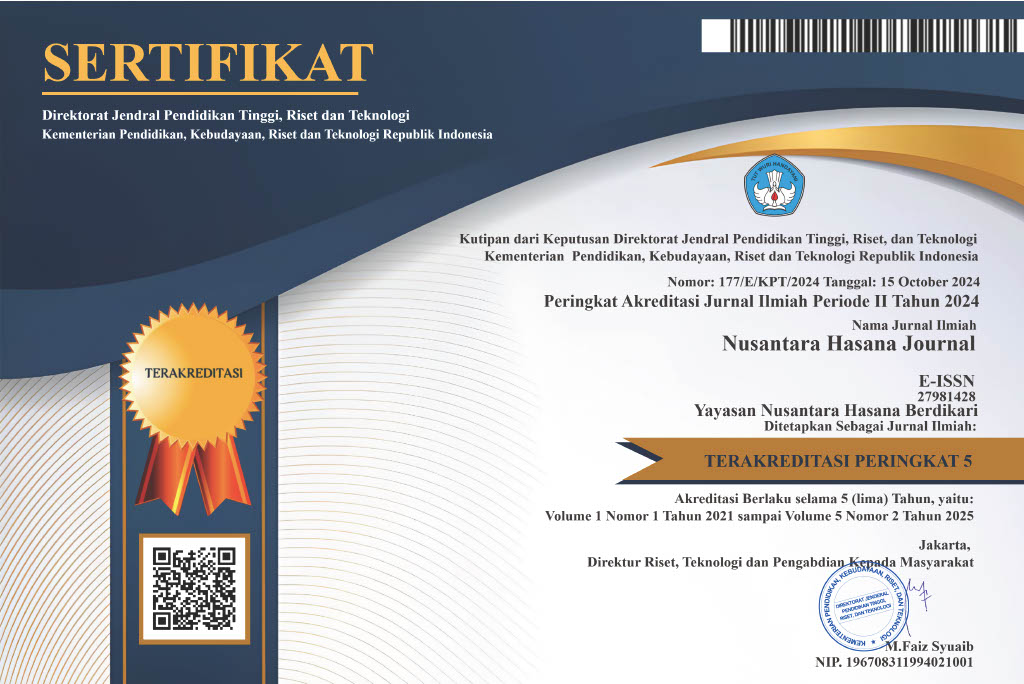POLA PERMUKIMAN NELAYAN TRADISIONAL BERBASIS MATA PENCAHARIAN DI CEMPAE KOTA PAREPARE
DOI:
https://doi.org/10.59003/nhj.v4i9.1348Keywords:
settlements, traditional fishing, livelihoodsAbstract
The settlements in Cempae are shaped by the daily activities of the community, particularly in relation to fishing. The settlement patterns are directly connected to water bodies and village roads, with the sea serving as the central orientation. The location and form of traditional fishing settlements in Cempae are influenced by the inhabitants' occupations. A prevalent issue today is the development of new settlements located far from workplaces, with designs that do not reflect the residents' professions. This often leads to rejection and abandonment of these new settlements. Therefore, research is needed to explain the influence of livelihoods on fishing settlement patterns. This study aims to analyze the patterns of traditional fishing settlements in Cempae that align with fishing livelihoods. The research employs a descriptive qualitative method with direct surveys to the settlement locations, providing detailed descriptions of the existing conditions. The results show that livelihoods influence the patterns of traditional fishing settlements in Cempae, as seen in the orientation of buildings facing the source of livelihood, namely the sea.
Downloads
References
Bintarto,R.(1977). Pengantar Geografi Kota, Yogyakarta: Spring
Budihardjo, E. (2006). ”Percikan Masalah Arsitektur, Perumahan Perkotaan”, Cetakan terbaru, Gadjah Mada University Press, Yogyakarta.
Departemen Permukiman dan Prasarana wilayah Direktorat Jenderal Perumahan dan Permukiman (2001), Petunjuk Pelaksanaan Peremajaan Lingkungan Permukiman Kumuh di Perkotaan dan Perdesaan dengan Konsep TRIDAYA, Jakarta.
DPU Cipta Karya (1989) Pedoman Teknik Pelaksanaan P3D Nelayan Jakarta: Direktorat
Jendral Cipta Karya, Direktorat Perumahan
Dwi Ari. I. R. & Antariksa. 2005. Studi Karakteristik Pola Permukiman di Kecamatan Labang, Madura. Jurnal ASPI Volume 4 Nomor 2, April 2005, halaman. 78-93.
Junaidi. (1991). Tempat Pelelangan Ikan Masalah dan Pengembangannya di Kota Padang.Padang: UBH Press
Junaidi. (2009). Penataan Permukiman Nelayan. Yogyakarta: Penerbit Andi.
Mardanas dkk. 1985. Arsitektur Tradisional Sulawesi Selatan. Ujung Pandang: Depdikbud
Mulyadi (2007), Ekonomi Kelautan, PT Raja Graffindo Persada. Jakarta
Mulyati, A. 1995. Pola Spasial Permukiman di Kampung Kauman Yogyakarta. Yogyakarta : Rake Sarasin.
Priyangan, D. M. (2018). Decision Support System (DSS) Sistem Penentuan Pemukiman Kumuh di Kabupaten Pringsewu Menggunakan Metode K-Means dan Geographic Information System (GIS) [IIB DARMAJAYA]. Diakses dari: http://repo.darmajaya.ac.id/2237/
Rapoport, Amos (1977), Human aspect of Urban Form, Pergamon Press, Oxford, New York, Toronto, Sydney, Paris, Frankfurt.
Sasongko, R., Astuti, W., & Yudana, G (2022). Pola Spasial Permukiman Di Bantaran Sungai Premulung, Kota Surakarta. Jurnal Desa-Kota Volume 4 Nomor 2, halaman 152-66
Taylor, L (1980) Urbanized Socienty Santa Monica California: Goodyear Publishing
Company, Inc.
UU No 1 tahun 2011. Tentang Perumahan dan Permukiman http://repository.usu.ac.id/bitstream/handle/123456789/68145/Chapter%20II.pdf?sequence=4&isAllowed=y)
Downloads
Published
How to Cite
Issue
Section
License
Copyright (c) 2025 Ni’mah Natsir

This work is licensed under a Creative Commons Attribution-NonCommercial-ShareAlike 4.0 International License.
NHJ is licensed under a Creative Commons Attribution-NonCommercial-ShareAlike 4.0 International License.
Articles in this journal are Open Access articles published under the Creative Commons CC BY-NC-SA License This license permits use, distribution and reproduction in any medium for non-commercial purposes only, provided the original work and source is properly cited.
Any derivative of the original must be distributed under the same license as the original.
























